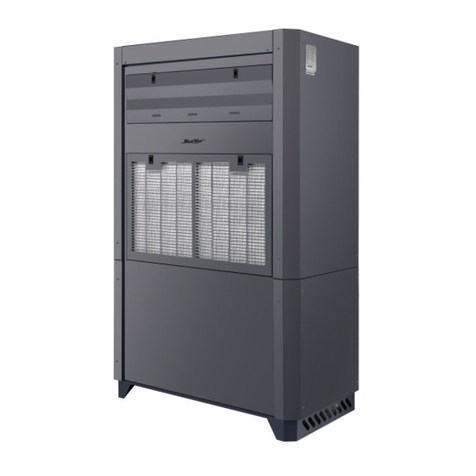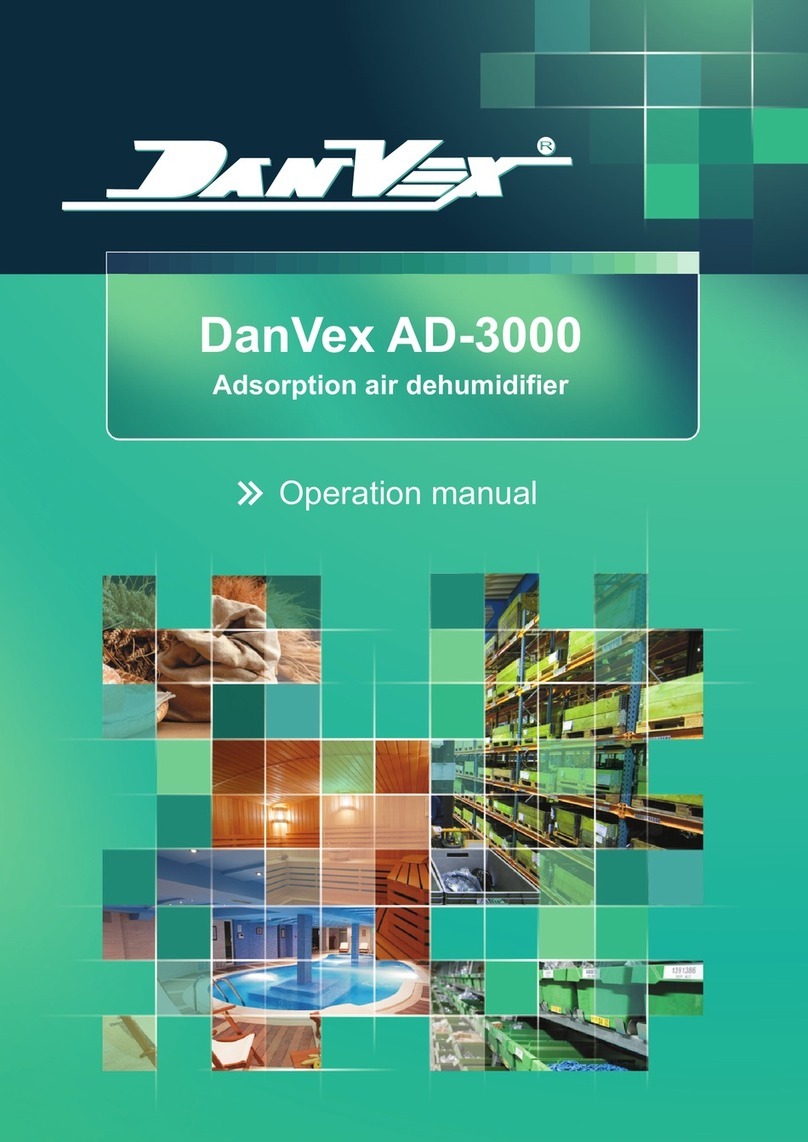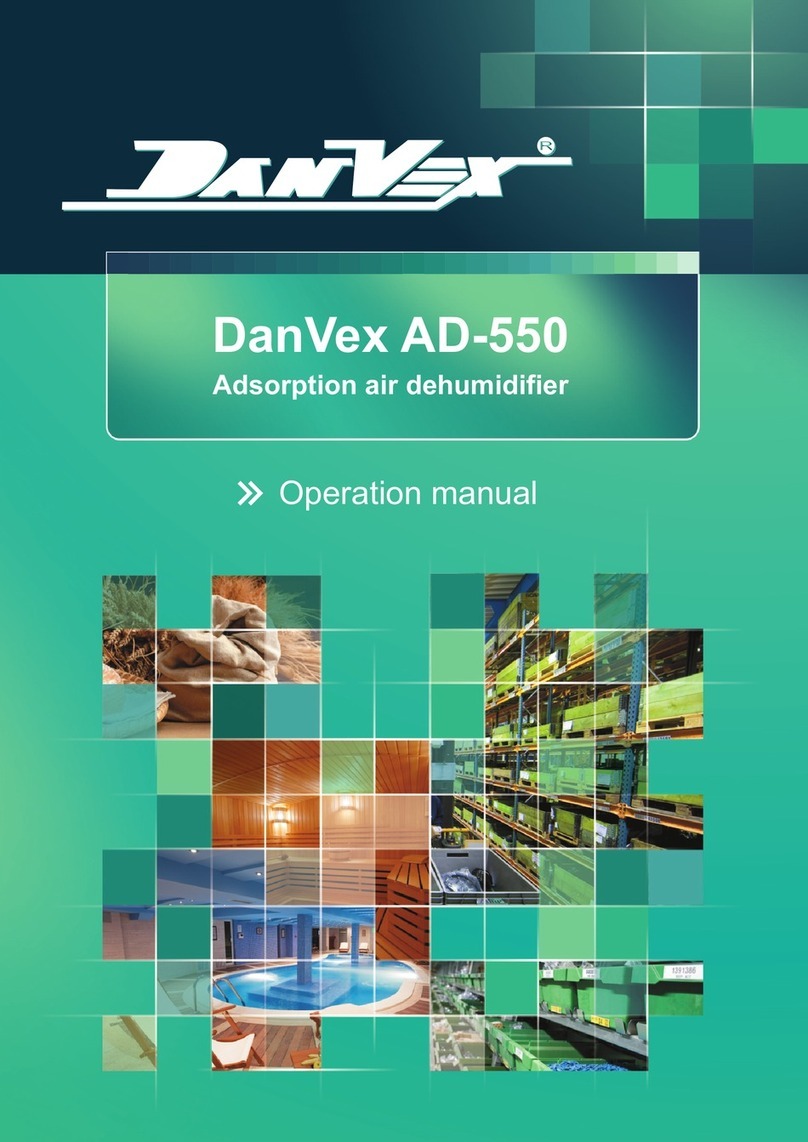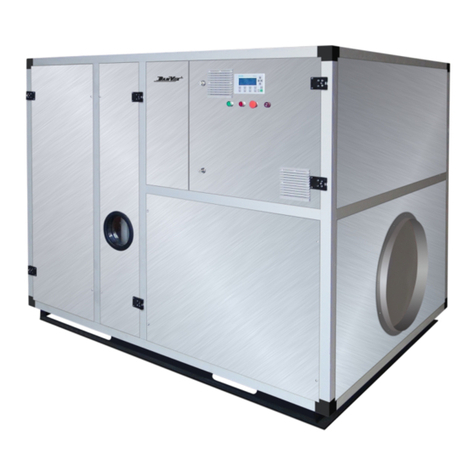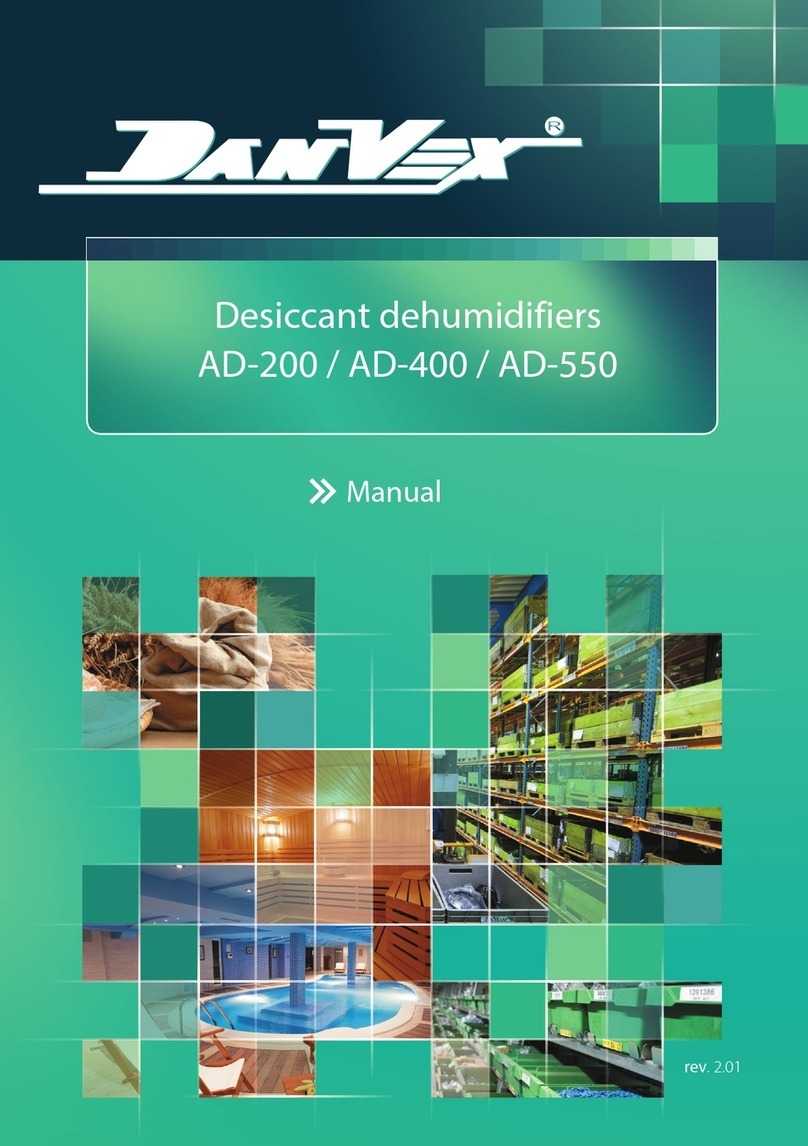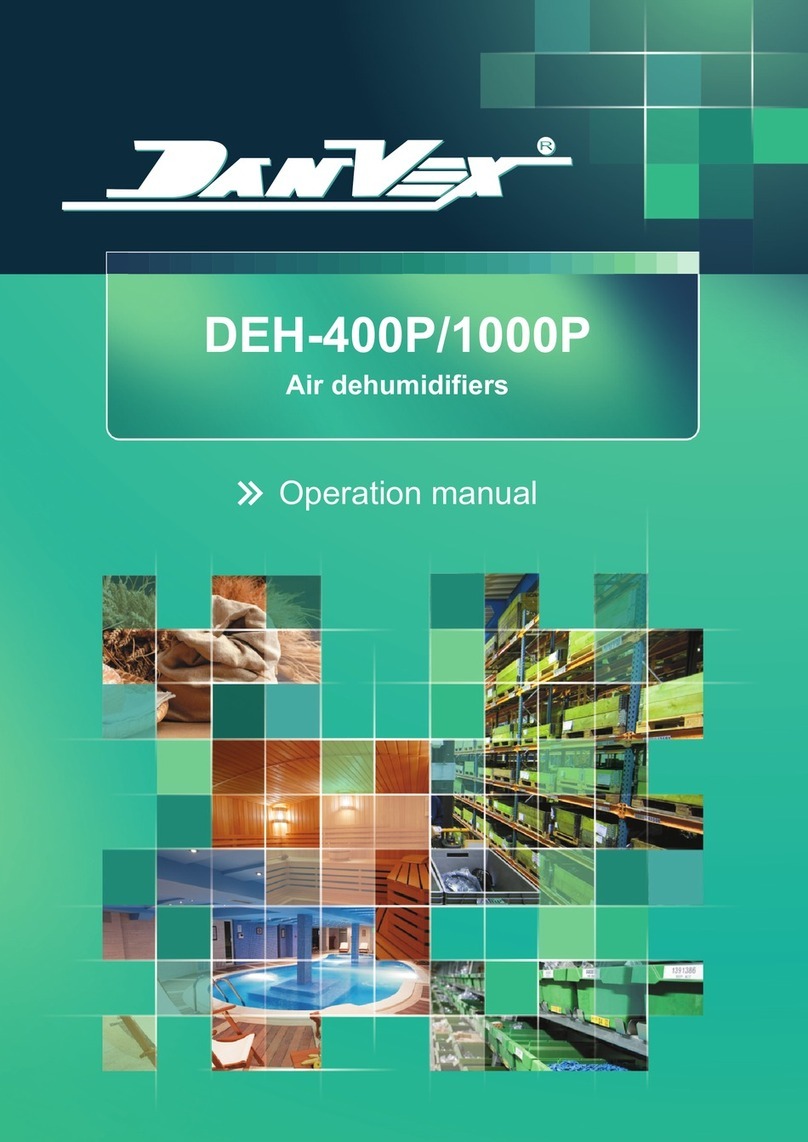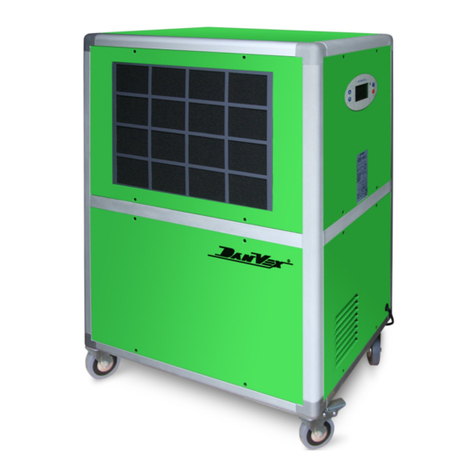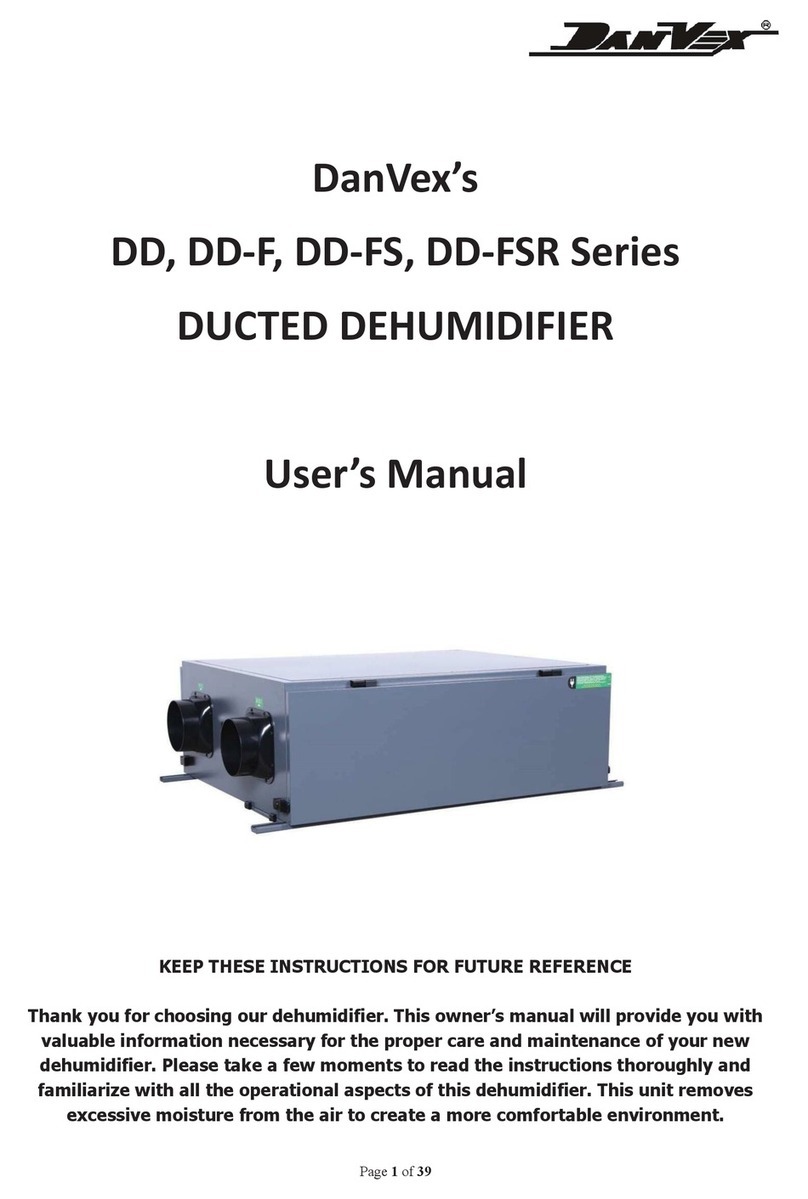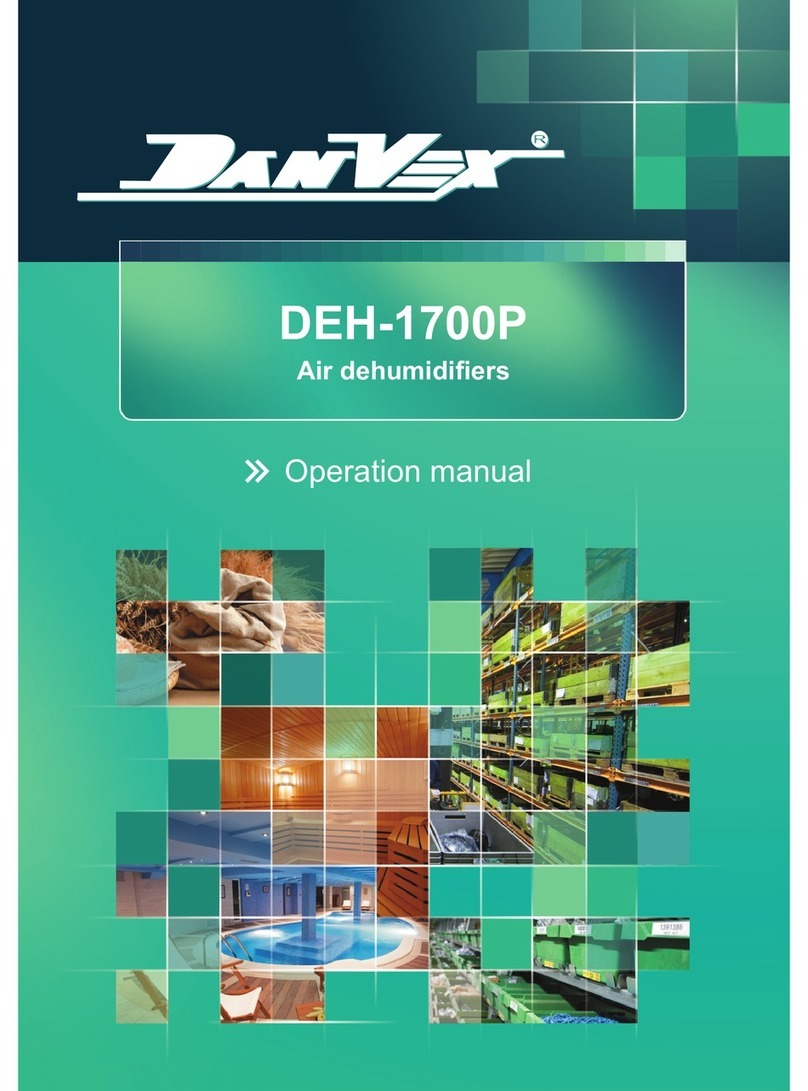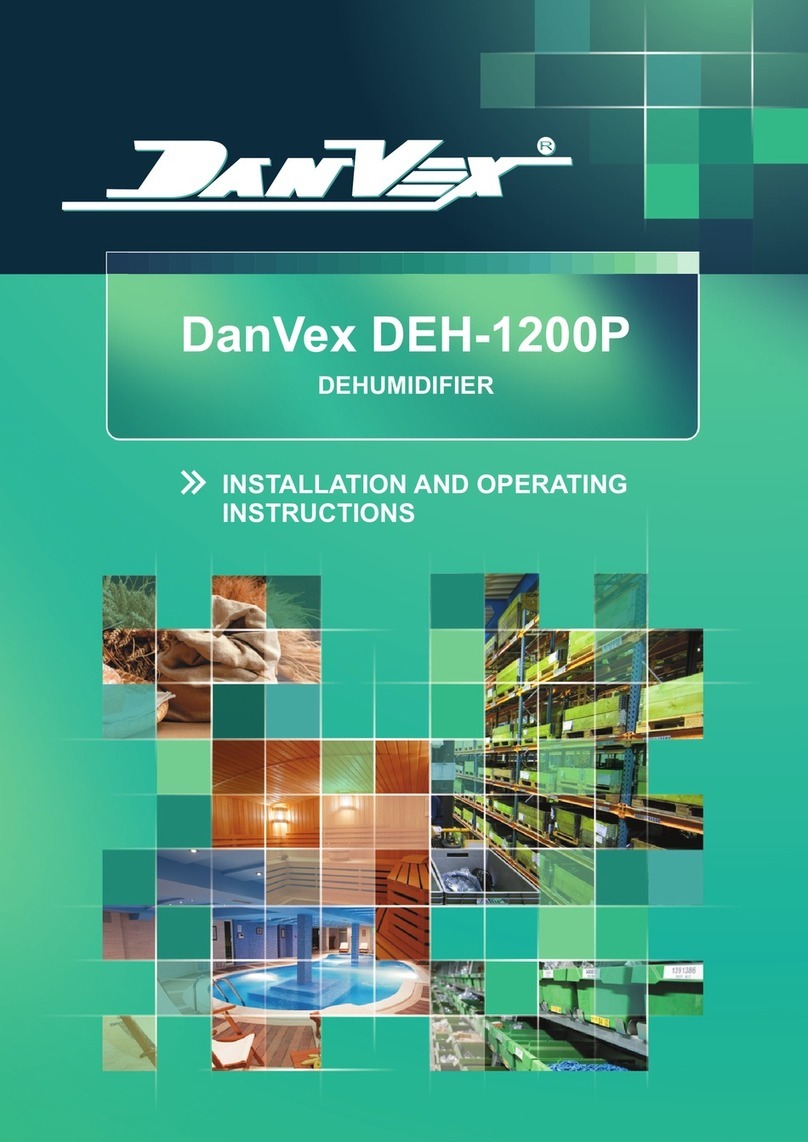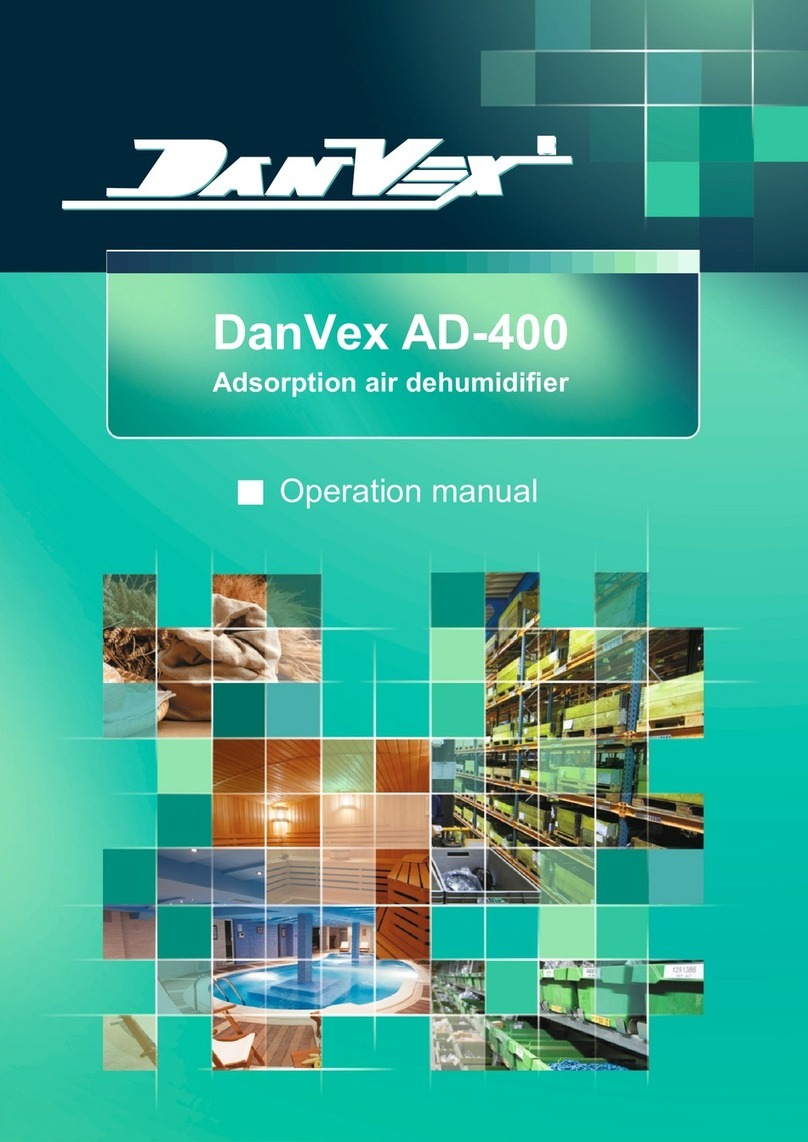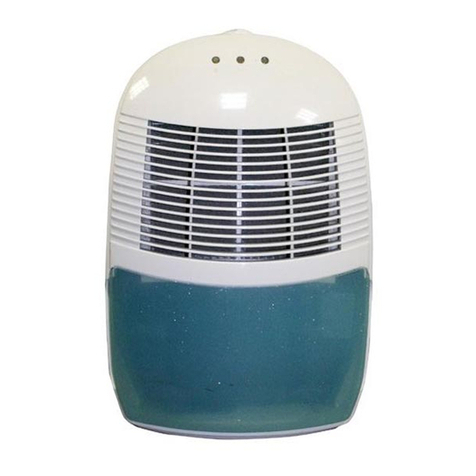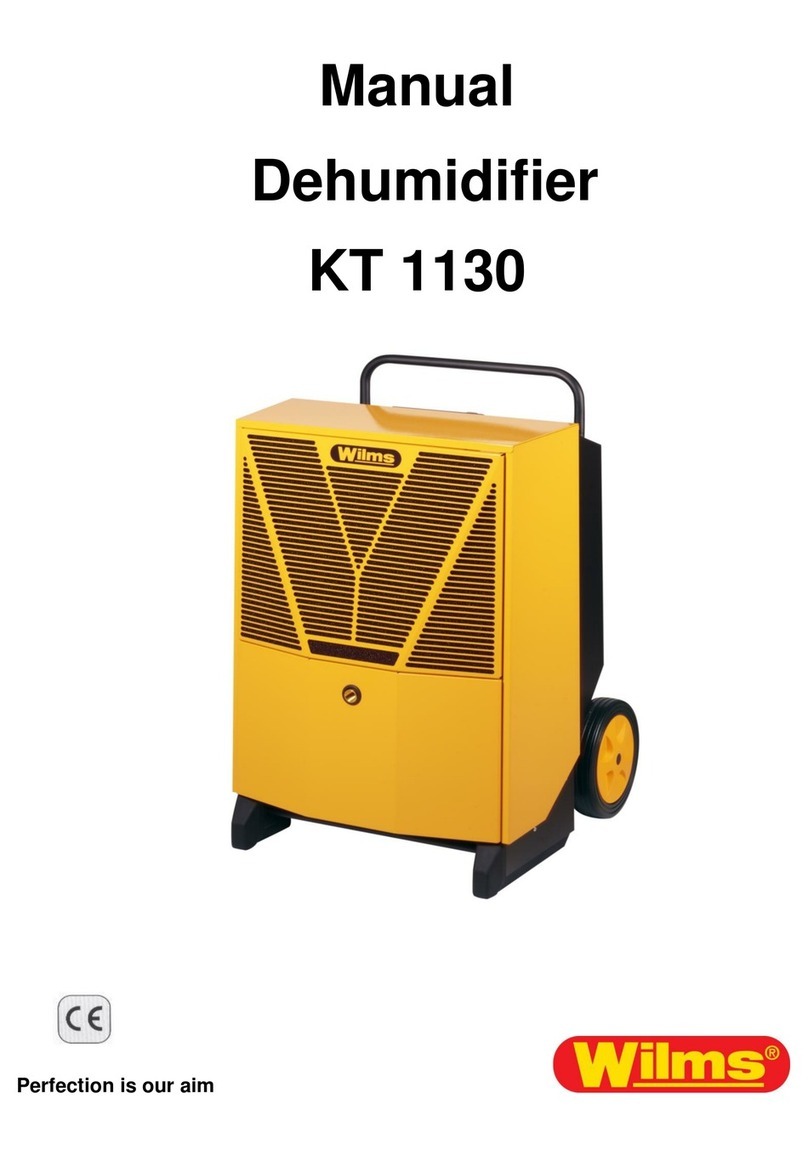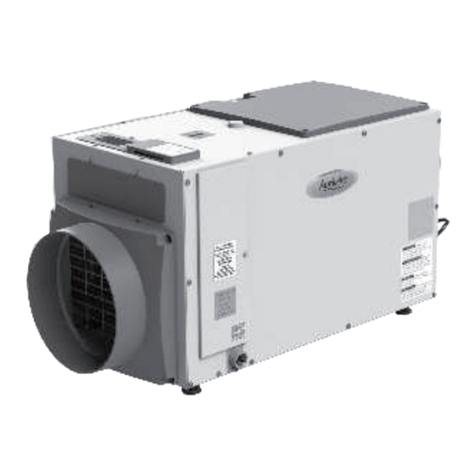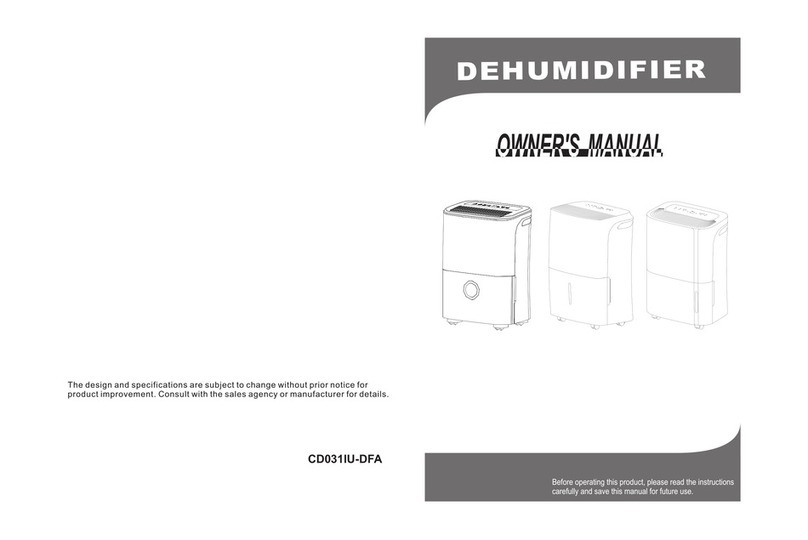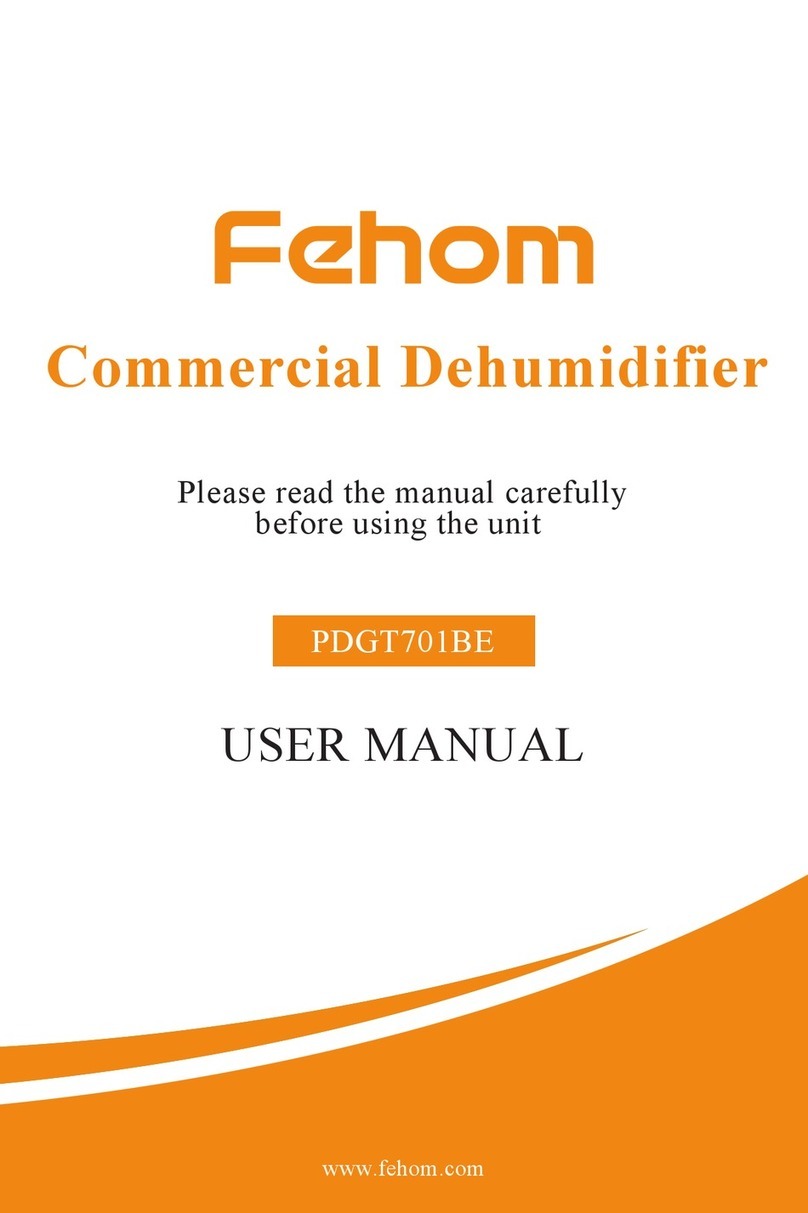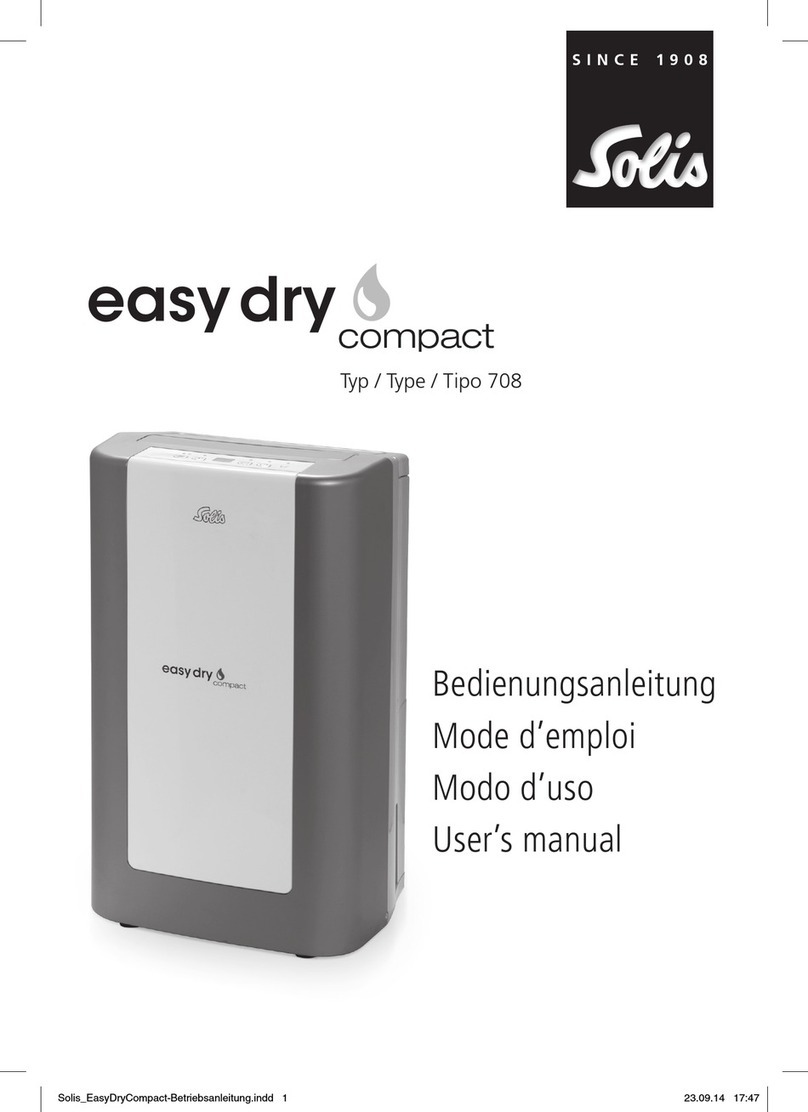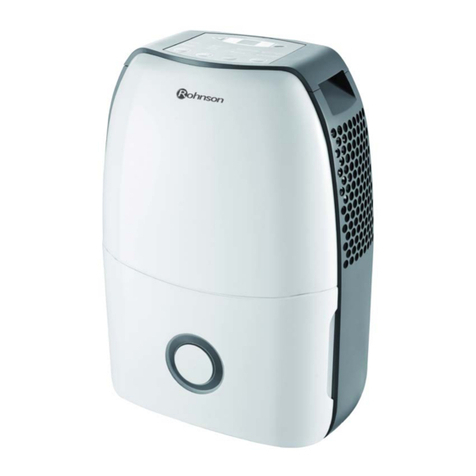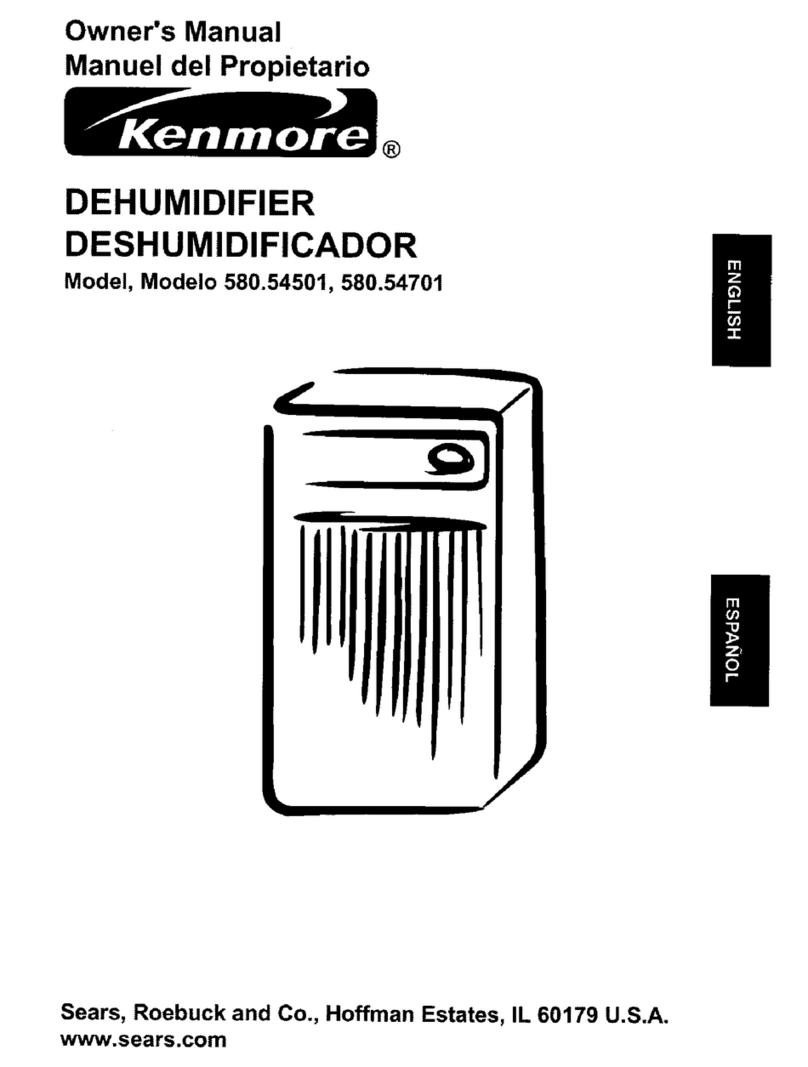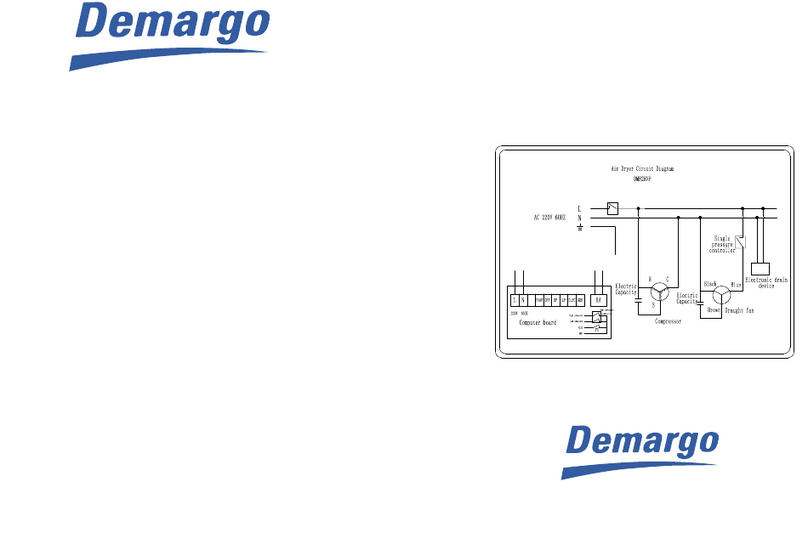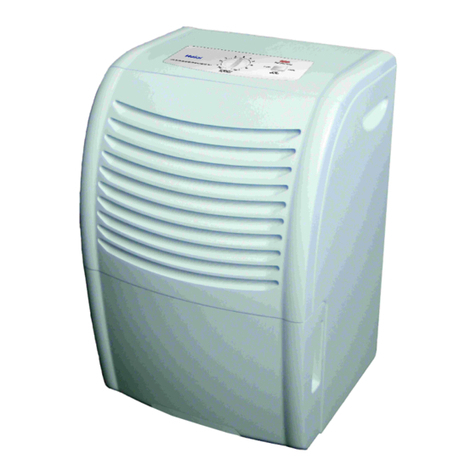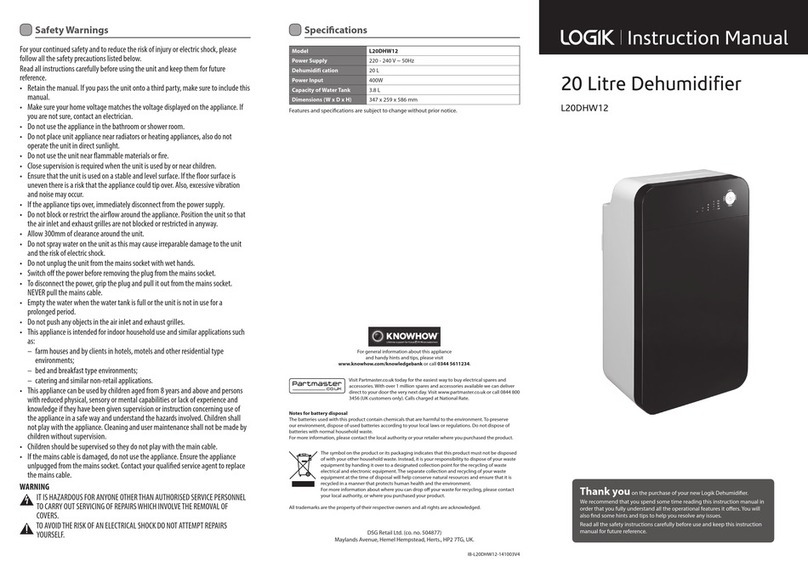
R
www.danvex.fi 8
Dried and cooled air passing through a "warm" condenser is heated. Then it is discharged to
outside, the air temperature at the outlet is higher than at the inlet to the humidifier (the
difference is about 5 degrees).
The dried air is mixed with surrounding air again. The relative humidity gradually drops to the
set RH value due to continuous air circulation through the unit.
Depending on the air temperature and relative humidity the condensed water can be
discharged continuously or only during certain defrosting stages. The condensate can be
discharged either into a detachable tank located inside the dehumidifier or directly into the
waste water disposal system.
When the dehumidifier operates with an internal tank the dehumidifier will switch off when the
tank is filled with condensate. The tank filling indicator «FULL» lights up on the control panel
display. For the dehumidifier further operation it is required to remove the internal tank, to
release it from water and to install back into the humidifier (the filling hose should be put into
the tank filling port). «FULL» indicator will go down.
When the dehumidifier operates without an internal tank with direct condensate drain into the
waste water disposal system, it is required to connect the filling hose located inside the
humidifier with the internal part of the connector located on the dehumidifier side wall, and the
hose for condensate discharge to the waste water disposal system should be connected with
the connector external part. In this case the humidifier can work continuously without
interruptions caused by the condensate discharge from the filled tank.
Unit location
The unit is operated in the buildings where dry air is necessary for technological processes,
people comfort and where it prevents significant financial losses due to goods and products
damage (for example, damages caused by mould formation).
The unit is mainly used for drying and dehumidification of:
· industrial buildings of various applications, storage rooms and cellar rooms.
· archives, laboratories.
· laundries, changing rooms etc.
For optimum, economical and safe unit operation the following instructions must be followed:
:
· The unit must be installed securely upright to ensure unhindered condensate
discharge into the condensate tank.
· If possible the unit must be installed in the centre of the room long wall so that optimal
air circulation is ensured.
· It must be ensured that the air is able to be sucked in freely at the front of the unit and
to be discharged through the air grill located at the back of the dehumidifier body.
· It is prohibited to locate the unit in close proximity to radiators and other heat sources.
· The room to be dried or dehumidified must be closed to prevent the air entering from
neighbor rooms and from outside.
· Windows and doors must be closed to prevent free air exchange between the room
and ambient atmosphere.
· If the unit is used in dust-laden environments it is necessary to take appropriate
maintenance measures specially adapted to the particular operation conditions.


